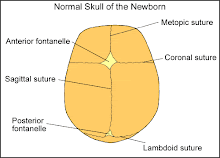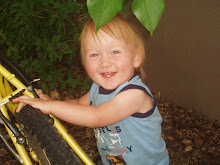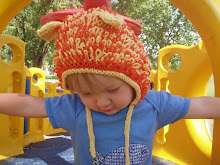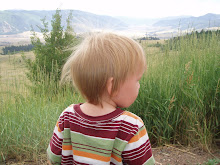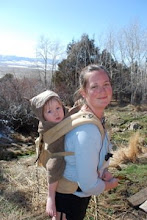Welcome to Mason J's cranio blog. We're starting this to keep our friends and family updated on what is happening through this whole process (as well as to divert some of mama's energy away from constantly worrying). It's mid-August now, and I can't believe our little guy is already one year old! In a little over a month Mason will most likely be undergoing major skull surgery to correct his sagittal craniosynostosis. I say most likely because I'm still having trouble believing that it's actually happening, still having trouble completely deciding to do it, and still hanging on to the the hope that when we get to Dallas that Dr. Fearon will tell us that Mason does not need surgery after all. I'm getting way ahead of myself... For the purpose of this blog I should probably start with a little explanation about all of this. Sorry but this first post will probably be long.
Most of you know a little or a lot about Mason's birth story....it could be a whole blog to itself. As that is not my purpose here, I'll be brief. Mason was born on August 6th, 2008 by Cesarean section after a long labor and many hours of pushing. I pushed and pushed in every way possible (I'll spare the details here) and he just would not budge. He was posterior in position, with the cord around his neck, and as we were soon to learn, his head could not mold properly due to a premature fusion of one of his cranial sutures. His head was a little pointy at the crown, but it was assumed this was normal and due to birth and nothing else was mentioned about it. He was a strong, beautiful, healthy baby boy, and he grew (and continues to grow) wonderfully. At his first well-baby check-up the doctor noticed that is anterior fontanel (soft spot) was closing a little too quickly. He said it was nothing to worry too much about at this point, but that we should keep an eye on it and regularly check his head circumference. He also mentioned that sometimes when this happens surgery is necessary to allow room for the brain to grow.
Being the mom that I am, I went straight home and began researching premature closing soft spots and what it meant. I kept coming across craniosynostosis and wondering if this is what Mason had. I could definitely see a resemblance in head shape when I looked at Mason's head and the pictures I found on line of other kids with cranio. Even so, Mason's head was not nearly as severe in shape as most of the photos I came across. I could also feel a bony ridge along Mason's sagittal suture, another indicator (besides fontanel closure and abnormal head shape) that this suture was closed before it was time. I called our doctor to get a referral to a specialist at the Children's Hospital in Denver.
A couple of weeks later we headed up to Denver for Mason's appointment. I had no idea what to expect, and was scared that we'd immediately need to do surgery. All of my research seemed to suggest that surgery was almost always the best option for kids with sagittal cranio (or scaphocephaly). We saw a very nice nurse practitioner in Denver, who is supposedly an expert at diagnosing craniosynostosis. I could tell that she is use to seeing much more severe cases, because at first she didn't think anything was wrong with Mason, though she admitted that his head shape was "on the cusp" of normal, with a small amount of forehead bossing (when the forehead sticks out a little). I pointed out the ridge along the suture, and she decided to send us down for an xray. The xray confirmed my mama intuition, that the back portion of Mason's sagittal suture was prematurely fused. (See the picture on the side). She called in a neurosurgeon to do a consult, and they both agreed that though the bones were fused, Mason's case was very mild and no surgery was recommended at that time. They also said that it was a cosmetic issue, and whether or not to do surgery would be our choice.
We went home relieved that for now at least we'd dodged the surgery bullet, but I was still concerned about what this meant for Mason now and in the future. I put it out of my mind for a while, but I still looked at his head all the time, wondering if he would need surgery one day. A few months later my intuition kicked in again, and I began doing more research. His head still looked good to us. It was growing in the characteristic football shape of scaphocephaly, but it was still mild compared to others, and well masked my his hair. His development was (and still is) right on track. As I researched I came upon quite a bit of evidence which disagreed with what the docs in Denver told us. It seemed that in many cases cranio was much more than "just cosmetic", and that often kids had dangerously raised intercranial pressure (ICP) which could lead to headaches, seizures, developmental delays and other cognitive problems. It makes sense that if the brain is not able to grown in the shape it was meant to, that problems could arise. I found a wonderful online forum,
Cranio Kids, where I met and talked with other parents of kids with various types of cranio.
That is where I learned about
Dr. Fearon (click his name to take you to his website where you can learn more about him, the center, and the condition that Mason has). He is a very well-known, very experienced craniofacial surgeon, who specialized in cases like Mason's. I emailed his some photos of Mason, and we did a phone consultation with him. (He does this free of charge, and also is willing to answer any questions we have, even if we don't end up using him.) Everything that I've heard about him is wonderful, from his level of expertise, to his loving bedside manner, and that was only confirmed in talking with him. He believes that Mason does need treatment. Given all that we know about brain growth, brain metabolism and blood flow, there are risks that not doing this surgery for Mason may cause problems later down the road. Of course the surgery has it's own risks, and this is not a decision we are making lightly.
If fact, I'm terrified of putting my baby boy through this. It has been and continues to be the hardest decision I've ever had to make. He looks so perfect and beautiful to me, but lately I'm pretty sure he's been having headaches. We could wait and see for another couple of years, but then doing the surgery later is a little more complicated because of the continued growth of the skull. From what I can tell on the craniokids forum, these babies do really well through surgery and recover very quickly...in fact, in some ways it seems harder on the parents than the kids. I'll write another post explaining exactly what will happen during the surgery and how long we're likely to be in the hospital.
So where are we now? Though I question our decision daily, we are heading to Dallas mid-September to have a consultation with Dr. Fearon. After that, if we believe that surgery is the best option for Mason, it is scheduled to happen on Wednesday the 16th. I will be posting regular updates on this site to keep everyone informed. OK, that's probably a long enough post for now. More info to come. Thanks for reading and for keeping us in your thoughts and prayers!








